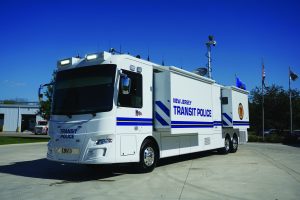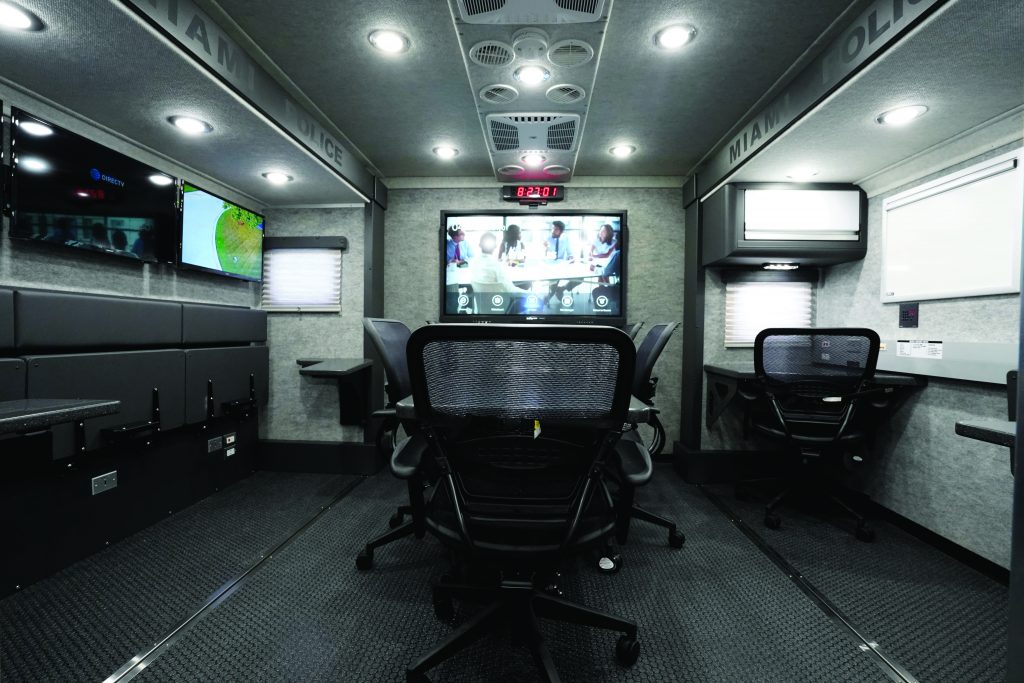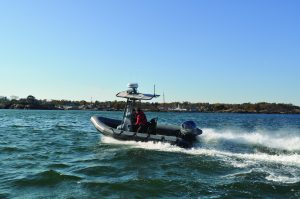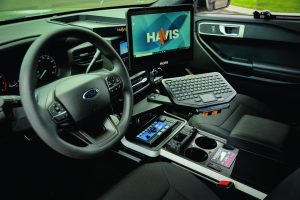A law enforcement vehicle is an important, highly visible symbol within the field, and its presence signals a community that its police force is on site.
Due to Hollywood, many associate these vehicles with action scenes and high-speed chases; however, this does not even touch the surface of what vehicles are used for in the profession.
For years, automotive companies have been updating the vehicles that they provide to officers. Many have begun creating customized pieces to better fit the needs of a specific agency.
Custom Vehicles
Law enforcement vehicles are more than just means of transport. They are an extension of an agency’s office and functionality. Having the vehicle custom-built can enhance that extension, provide durability, and extend the vehicle’s lifespan.

LDV, Inc., has been designing and manufacturing custom law enforcement vehicles for nearly 45 years. Their product offering includes mobile command centers, SWAT and tactical vehicles, catastrophe response vehicles, and more. From small platform units and trailers to multiple slide-out room cab chassis mobile command centers, the Burlington, Wisconsin-based manufacturer builds vehicles that are ready for work and offer on-site fabrication, woodworking, electrical, and paint and body services.
Based on an agency’s needs, their custom vehicles can include a conference or collaboration area, galley area, and a lavatory in their interior layouts. The vehicles can enhance the workspace not only inside, but also on the outside. The interior workstations can be expanded to include outdoor options by the integration of up to three work areas that can be equipped with high-resolution display monitors, charging stations, HDMI inputs, and radios for communication.

The manufacturer offers several industry-exclusive features, such as flat-floor slide-outs, heavy duty body storage compartments, and weatherproof exterior workstations. The company also boasts its Intel-I-Touch vehicle automation system, which is an easy-to-navigate touchscreen user interface that handles all setup and stowing functions of the vehicle such as turning on lights and starting the generator.
“LDV has always been a market innovator, and we are continually finding ways to improve our vehicles through cutting-edge technology integration and customer ideas and feedback,” said Rick Zinnen, Special Service Vehicles sales specialist at LDV, Inc.¹ One area the manufacturer has expanded into is building vehicles that can be used for COVID-19 screening or response. These vehicles feature heating and cooling air flows that can be isolated to each room to prevent the spread of virus particles between spaces. Extra ventilation can also be provided to meet CDC guidance for airborne infection isolation rooms.
Nontraditional Vehicles
Nontraditional vehicles, including boats, have also been used by law enforcement to reach areas where a traditional police cruiser can’t.
Located in Marblehead, Massachusetts, RIBCRAFT USA brought an innovative vehicle line to the market—the Rigid Inflatable Boat (RIB). “The idea in general for the RIB got its original start in the UK and gained momentum and popularity in the United States over the last 20 years” said Matthew Velluto, director of business development and marketing at RIBCRAFT.² Designed for military, fire and rescue, and law enforcement uses, the RIB features a fiberglass hull encapsulated with an inflatable tube that goes around the outside of the boat.

Whether on a small pond or an ocean, the “deep-V” fiberglass hull is designed to slice the waves rather than pounding in rough water situations. The tube offers many benefits to the boat. It can act as a fender so that officers can get close to other boats without causing damage, and it can allow for easier rescue as the tube is lower to the water. It even keeps the spray of the waves to a minimum because it traps the rising water under, reducing the overall fatigue of the operator over an extended period of time.
The boat is offered in a variety of sizes ranging from 14 feet to 41 feet.
Accessories
A law enforcement vehicle’s usefulness does not stop at its body and durability. It also depends on specialty accessories that can create a more efficient, productive work environment for officers.
Havis, Inc., headquartered in Warminster, Pennsylvania, has been a designer and manufacturer of mobile office solutions for the public safety industry for over 80 years. Their catalog of rugged solutions includes touchscreens and keyboards, K9 and prisoner transport, and consoles and more.

Havis recently launched a revolutionary console for the 2020–2021 Ford Police Interceptor Utility that redefines the workspace for public safety professionals. “The development of the new vehicle-specific console began in 2019 with the vision for a new and unique console design,” said Chris Bernert, Havis’s Director of Sales. “The final product offers a heightened level of appearance, fit and finish, and feature content.”³
With sleek trim panels that hide equipment-mounting fasteners, the VSX console attains the fit and finish of an OEM console while giving fleets the durability they need to succeed in the field. Once the OEM tunnel plate is removed, the console mounts between the seats and fits the lower dash contour.
Nearly 18“ of the internal mounting space can be utilized for equipment or accessories. The new console includes familiar features, such as 8“ of extrusion on both sides of the console for side mounting accessories and mounts for a speaker at the console’s rear. Additional ease-of-use features include a 2“ deep tray in the front section of the console, which can be swapped with specific equipment mounting brackets for light and siren remote control heads. The other option integrates a printer mount for the Brother PocketJet.
Chief Engineer Stephen Telesco explained that the Havis team worked closely with industrial designers to create the conceptual version of the console. The result of this collaboration is a lighter product than comparable consoles that does not sacrifice strength or versatility.
Also providing accessories to enhance the use of a fleet is the St. Louis, Missouri-based Code 3. With a wide offering of lights, sirens, and advanced automation technology, Code 3 aims to both protect first responders and make their job easier.4
Their latest Covert lightbar is only 1.6“ high, but it delivers intense light output with dual- or tricolor light heads. When integrated into Code 3’s automation technology, the Matrix System, agencies are able to program patterns and link vehicle actions to the lightbar functions.
Living up to its name, the Covert lightbar provides a more discreet profile and an automated dimming function, reducing night blindness and the dazzling effect. Made with a thicker lens and robust materials, it can resist damage, warping, and fogging. The bar comes in nine lengths to accommodate for any vehicle size.
Through movies and television, the public is shown the high-action parts of the job. Customized vehicle manufacturers, however, are looking at their customer—officers—to guide improvements to their product lines, while keeping the police officers safe and productive.
Notes:
¹Jason France (marketing manager, LDV, Inc.) email interview, October 16, 2020; Rick Zinnen (special service vehicles sales specialist, LDV, Inc.) email interview, October 16, 2020.
²Matthew Velluto (director of business development and marketing, RIBCRAFT) telephone interview, October 13, 2020; Kelly (Gorman) Marie (marketing coordinator, RIBCRAFT) telephone interview, October 13, 2020.
³Chris Bernert (director of sales, Havis, Inc.) email interview, October 30, 2020; Sara Meyer (marketing manager, Havis, Inc.) email interview, October 30, 2020.
4Michael Culton (content specialist, Code 3) email interview, November 2, 2020.


